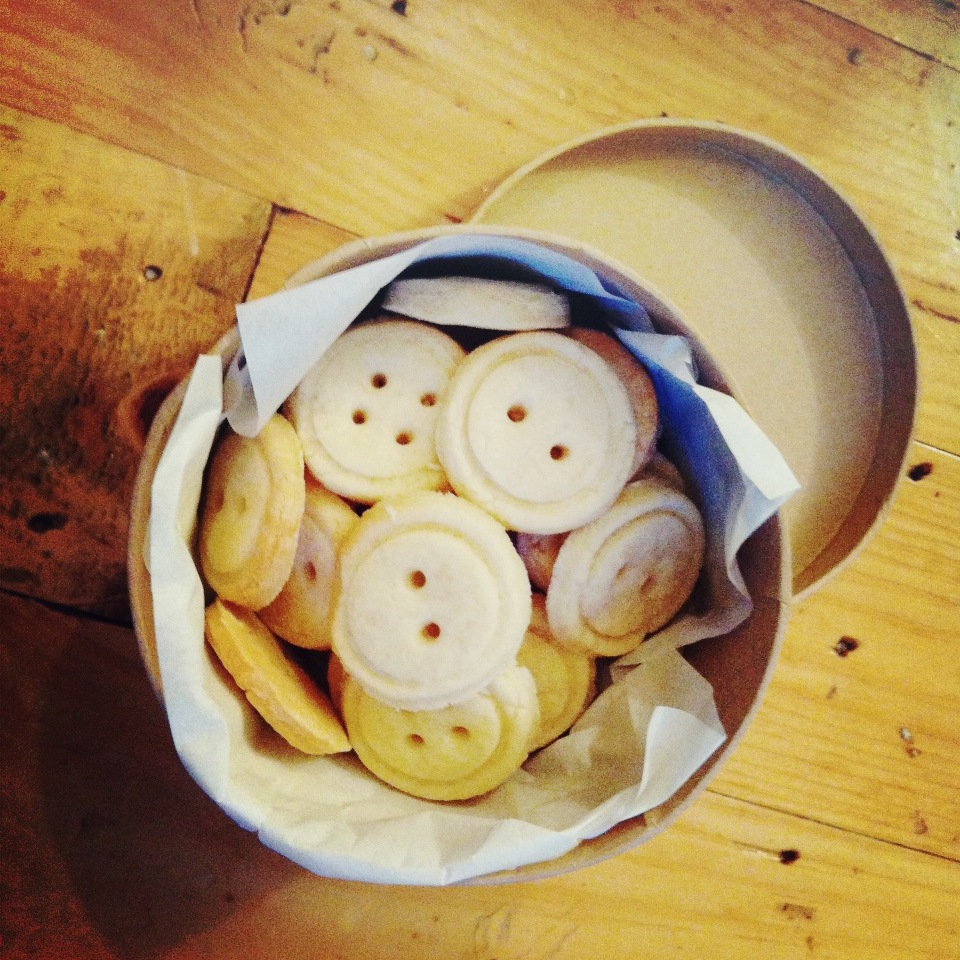Last Wednesday evening, the Beehive gathered to make sausages. Oddly enough, the sausage making party may be the perfect ladies’ night activity! Guaranteed fun, deliciousness, and, yes, naughty innuendos aplenty (resistance on this last element is futile). We found this to be a surprisingly simple food craft with extremely gratifying results.

I got a hankering to make sausages during a visit to
Joseph Schneider Haus, a German Mennonite museum and gallery in Kitchener, Ontario (mentioned in a
previous post) when chatting with resident pioneers about their preparations for a Butchering Bee the following day. In a nutshell, this harvest season Mennonite festival involves butchering whole pigs, creating sausages from the appropriate parts (e.g. the fatty pork shoulder), and smoking them in cotton casings in a smoke shed. The rest of the Bees were equally smitten with the idea of making and smoking sausages, and we decided to start simple, getting the hang of making fresh sausages from ground pork as a first step.

We were lucky enough to have a couple of local connections to get us outfitted for the task. A Mennonite friend’s parents, veteran sausage makers, had an extra manual stuffer - a real cast iron beauty patented in 1889. Ray at
Jepson’s Fresh Meats in the Hamilton Farmers Market enthusiastically supplied us with quality ground pork shoulder, natural, dry-salted, tubed casings, and much guidance on preparing the casings and other hot sausage tips. The Market also provided seasonings for an Italian sausage recipe which included fennel seeds, garlic, red pepper flakes and parsley.

After soaking the casings in warm water for two hours, we measured the seasonings into two large bowls - one ‘mild’ with fewer chilli flakes and one ‘hot’ with more. We then added the pork (divided equally among the bowls) and mixed the ingredients thoroughly by hand. It is important to ensure that the seasonings are well integrated to avoid biting in to a dense pocket of garlic or chili flakes!

At this point we formed a patty from each bowl to taste-test the mixture and check that each batch was well blended. We were all pretty blown away by how delicious it was and were excited to keep going on our sausage making journey.

We brushed the removable stuffing horn (inside and out) with oil to ease the passage of the meat, re-inserted it through the stuffer and carefully loaded the casing on to the horn. The casing is fairly sturdy but can suffer some wear and tear if handled roughly. After seasoning the stuffer with oil, we loaded up our first batch, packing down the meat to avoid air bubbles. Employing slow, methodical turns of the crank we eased the meat in to the casing. The key to plump sausages seemed to be lightly pinching the casing on the horn to offer some resistance, allow the casing to fill up more slowly. Otherwise you could be looking at slightly limp sausages, which is a common issue for beginners.
***Just try to read the preceding paragraph without blushing a bit…and you will get an inkling of the level of giggling that went down the evening of our sausage session!***

To form the links, start by twisting towards you 4 or 5 times, and then away from you at the next junction. I will confess that we did something somewhat unorthodox – we twisted our links as they came out of the stuffer rather than filling the entire casing tube with meat and then twisting off links. Our sausages turned out fine, though next time we will hold off on twisting until the end - which may result in more consistent lengths and control over the density of each sausage (looser portions can be made in to shorter links to fill them out a bit more, denser ones can be made longer).
We coiled our sausages on a large tray as they came out of the stuffer, transferring them to bowls in the refrigerator when a length of links was complete. The links can be left in the fridge for several hours or overnight before cutting them to ensure that twists have set.

After giving some to our host, Kieran, (whose open concept kitchen is a dream to work in) we each walked away with about eight succulent, handmade sausages, and quite possibly an addiction to sausage making. We have fried, BBQued, and sautéed them for pasta sauce with delicious results. After trying several more recipes I am confident we will be ready to graduate to smoking and a Beehive Butchering Bee. Stay tuned!
 Tools and supplies
Tools and supplies Large bowl or bowls for meat and storing finished sausages
Sterile gloves for meat handling (optional – clean hands if you’re not fussy!)
Tray to collect sausage
Sausage stuffer – manual or automatic
2-3 sausage casings (natural, dry-salted, tubed casings recommended)
Italian sausage recipe makes about 80 medium sausages20 lbs Ground Pork (sausage grade pork contains about 25 to 30 percent fat and is frequently mainly pork shoulder)
8 Tbsp Diamond Crystal Salt
4 Tbsp Fresh Ground Pepper
12 Tbsp Dried Parsley
10-20 tsp red pepper flakes (we used 5 tsp in one batch, 10 tsp in the other. Upon review we felt that for truly hot sausages, the hot one could have used 15 tsp of flakes)
20 Garlic Cloves, minced
Sausage Party Quotables:"I really like touching meat, guys."
"Time to lube the stuffing horn. Meg! That's all you!"
"They're a little flaccid"... "It's not you, it's me!!"
"It's humongous!" "It's engorged!" "It's accurately sized..."
"Think about a bun..."
photos by Hollie Pocsai, Kate Hunter, and Meg Makins










.JPG)


.JPG)
.JPG)

.JPG)
.JPG)






















+(2).JPG)
+(1).JPG)

